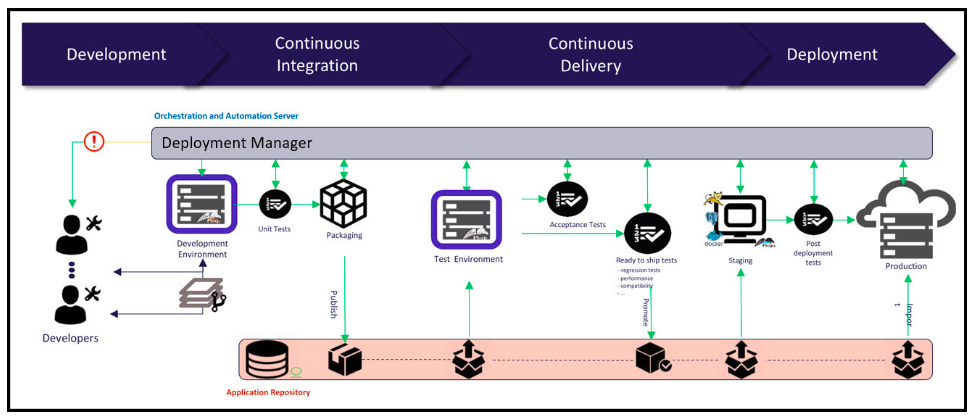
DevOps release pipeline
DevOps release pipeline
DevOps is a culture of collaboration within an organization between development, quality assurance, and operations teams that strives to improve and shorten the organization’s software delivery life cycle.
DevOps involves the concept of software delivery pipelines for applications. A pipeline is an automated process to quickly move applications from development through testing to deployment. The continuous integration and continuous delivery (CI/CD) phases are at the beginning of the pipelines.
The Continuous Integration portion of the pipeline is dominated by the development group. The Continuous Delivery portion of the pipeline is dominated by the quality assurance group.
Pega Platform includes tools to support DevOps. For example it keeps an open platform, provides hooks and services based on standards, and supports most popular tools.
The pipeline is managed by some form of such as open source Jenkins. Pega’s version of an automation server is the Deployment Manager available on the Pega Exchange.
The following diagram illustrates an example of a release pipeline for the Pega Platform.
The plays the role of an orchestrator and manages the actions that happen in continuous integration and delivery. In this example, Pega’s Deployment Manager is used as the automation server.
A pipeline pushes application archives into, and pulls then from, . The are used to store the application archive for each successful build. There should be both a and a . JFrog’s artifactory can be used an application repository, but an equivalent tool could be used as well. For example, for Pega Cloud applications hosted in the Amazon Web Services (AWS) cloud computing service would use S3 buckets as an application repository.
Notice that at each stage in the pipeline, a continuous loop provides the development team with real-time feedback on testing results.
In most cases, the is a shared development environment.
The term system of record is used in a distributed development environment. Separate development environments can push branches related to the same application to a central server known as the system of record. The central server is considered a Pega repository type. Within the system of record published branches are merged. Those branches are then removed from the originating development environment. See Development workflow in the DevOps pipeline on the Pega Community.
Note: Pega Platform is assumed to manage all schema changes.
For more information review the DevOps release pipeline overview article in the Pega Community.
If you are having problems with your training, please review the Pega Academy Support FAQs.
Want to help us improve this content?


